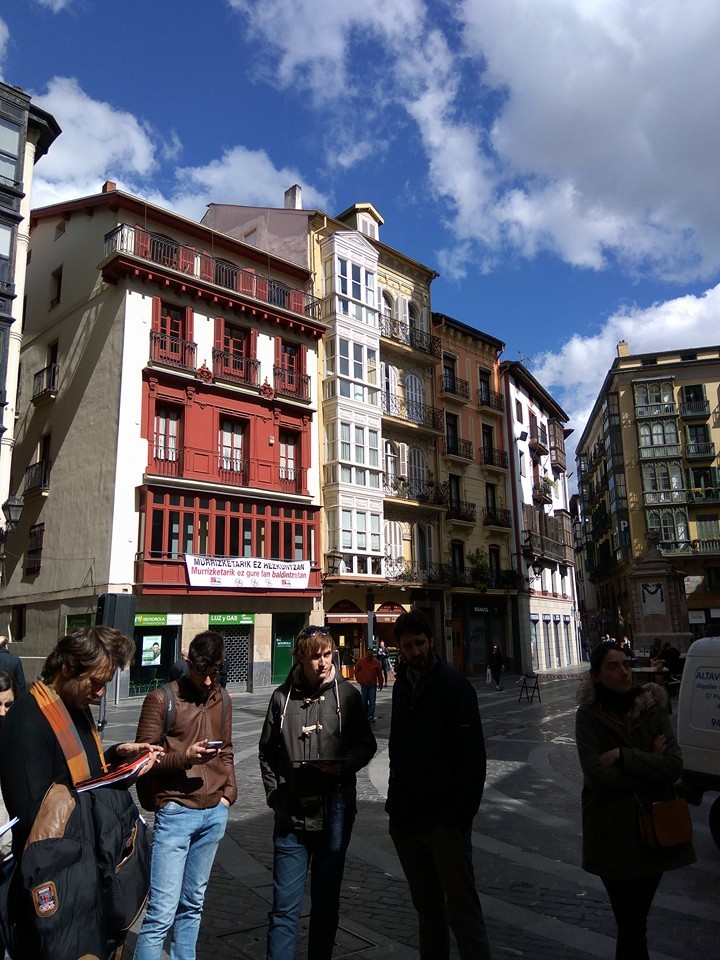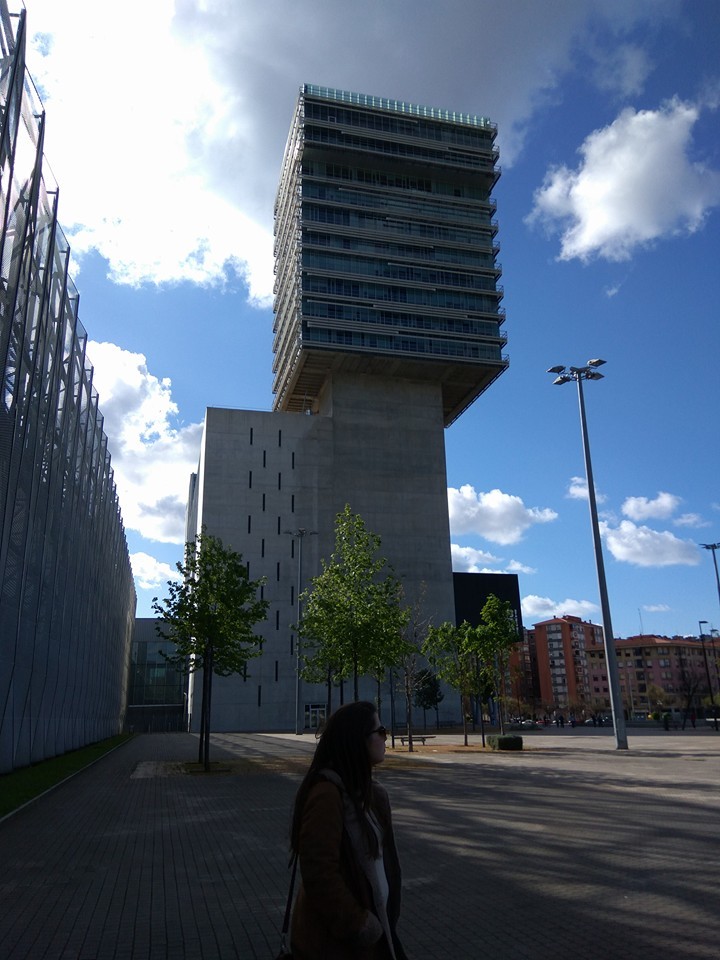Bilbao, a historic city
We decided to make the most of our last day in Bilbao. Our bus would leave around 7pm and we had to collect everything from the hostel. We wanted to visit as much as possible during the morning.
We focused in particular on seeing the Old Town that was very connected to the rich trade industry of the Estuary of Bilbao, although originally the first settlement were especially dedicated to cultivation and fishing.
When the city was prospering thanks to the trade routes, a clear division emerged between the left side, which was the mining district, and the right, which was the mercantile and harbour area. In the Medieval era the city was surrounded by a wall for reasons of defense, but as the population increased, it had to be destroyed to make room for new neighbourhoods.
The old houses were preserved, in their facades you could see the painted wooden balconies, displaying colours such as red and green. I thought they were very pretty, very classic. There was still a lot of activity in the industrial district, and some of the older beings were being maintained.

We first went to Bilbao La Vieja, we walked through some of its streets and we were going to stop at the San Antón Bridge. From there we took some photos and we regrouped around the San Antón Church, on one of the ends of the bridge. We saw a little of that church and then they told us about the Ribera Market, but we didn't go in because it was closed.
Then, we headed for the Santiago Cathedral via one of The Seven Streets. We met up next to its entrance whilst we discussed the facade and analysed its style. The square in which we found ourselves was very pretty.

Later we went to Plaza Berria, it was a sunny day, there were little stalls selling old books for very low prices. All the people of Bilbao were outside to spend the morning enjoying the ephemeral sun. We decided to sit in the square and have something to eat.
We walked next to the bank of the estuary, located in the more modern part of the city, and we saw from afar the different buildings that our teacher gave us details about. We even crossed to the other side via a bridge designed by Calatrava, the architect.

In the afternoon we went further out of the city of Bilbao, to see the suspension bridge, the Viscaya Bridge, declared a UNESCO World Heritage Site. It was built at the end of the 19th Century. It's a big, red ferry bridge that acts as an entrance to the Estuary of Bilbao. We climbed up and crossed to the other side, the cabin was very big and it hung over the sea.

On the way back we stopped in Baracaldo and we visited the Bilbao Exhibition Centre. We saw it from the inside and we were also the only visitors here, we were alone.
The building was peculiar from the outside. it had a very high area and it really stood out. But once inside we saw that it was much more extensive in its interior.

After finishing with this last visit there wasn't much time left, so we returned to Bilbao and got ready for the journey back. On the bus, we were very sleepy but happy having made the most of our last day.
Photo gallery
Content available in other languages
- Español: Bilbao, una ciudad con historia
Want to have your own Erasmus blog?
If you are experiencing living abroad, you're an avid traveller or want to promote the city where you live... create your own blog and share your adventures!
I want to create my Erasmus blog! →




















Comments (0 comments)